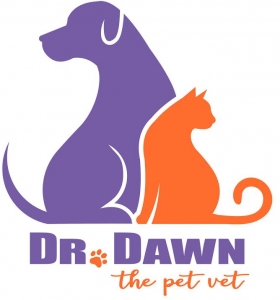
Allergies are an incredibly common, and frustrating, problem in pet dogs. Unlike humans, respiratory manifestations of environmental allergies are not usually very noticeable. Dogs with allergies get itchy skin, and they scratch like crazy as a result. The persistent chewing and scratching due to the underlying inflammation can result in excoriation and open wounds that are infected, especially of the ears and skin.
To many of you, this is not news. If you have lived with an allergic dog, or do, you know the signs. What you may be more interested in is the why (why does this happen to my dog) and how (how can I prevent it from recurring). Hopefully I can help shed some light on the situation.
There are several categories of skin allergies, including allergy to fleas, foods, and general environmental allergens such as pollen dust mites, and so on. Many dogs experience allergies to all three. There are many myths about allergies, and many treatments recommended. There tend to be many treatments for diseases that are not so much curable, as manageable. Lets discuss the environmental allergens, which I will refer to as atopic dermatitis (AD).
Why: Allergies are a state of hypersensitivity in which exposure to a harmless substance known as an allergen induces the body’s immune system to “overreact”. The incidence of allergies is increasing in both we humans and our pets. People experience “Hay Fever”(watery eyes, runny nose and sneezing), or asthma. While dogs can rarely also have respiratory allergies, the skin manifestation is more common. As described above, the whole body may be affected, noticeably the ears. You may see anything from general redness, or an eczema-like presentation, to hair loss, or even a bloody, moist dermatitis.
How: AD is an inherited predisposition. Many of the same seasonal allergens that we are tested for at our allergy doctors cause this in our pets. A confirmation of the diagnosis can be made by skin or blood testing of the patient. It can cost several hundred dollars to do it, and specific allergy injections can be tailor made for each patient thereafter. The problem is that it may not be 100% effective in alleviating the signs, by reducing the pet’s sensitivity to the allergens. It is one part of the therapy, and sometimes is cost prohibitive. Still, I do recommend it, particularly in those patients that seem to have clinical signs all, or most of the year.
Usually, I end up determining each dog’s personal history closely, and see patterns, which help me predict which season’s are the worst for each dog, and being proactive thereafter. At the first sign of itching or licking, I recommend that they do things to alleviate the itch so that we are not coming into the situation when it is much worse, and the dogs are miserable, infected, etc. Often that involves cleaning the ears more frequently with appropriate ear cleaners, bathing with soothing, oatmeal based baths, and possibly giving antihistamines. There are dietary supplements that help as well.

If the preventative measures prove too much, you might see secondary infections of the skin or ears. Often they are bacterial and yeast infections, and they add another layer of itching to the scenario. The itching will not resolve without clearing the infections. Sometimes medications that are stronger than antihistamines are necessary. And, it is extremely important to control fleas, because these dogs typically have flea allergies as well, making them hypersensitive to even one flea bite, triggering the whole body to react.
As there is no cure, this should be seen as a lifelong disease. Yet, if you are proactive, you may be able to reduce the signs significantly. Some years are worse than others. Just as we pay attention to pollen counts for humans, so should we for dogs. Your vet and you should come up with the custom made treatment plan for your dog. It will empower you to have some control over the situation.
I hope you found this helpful, particularly as we move into the more common allergy seasons.
Dr. Dawn
Please subscribe and share here




